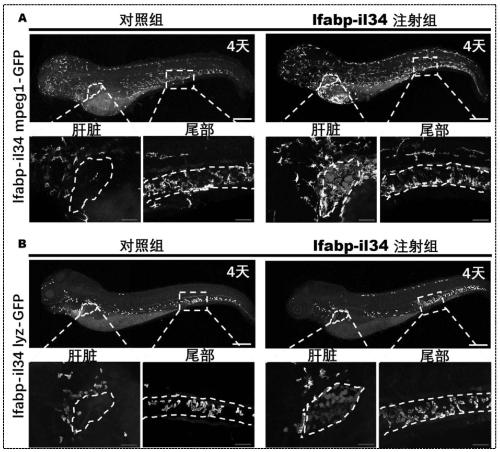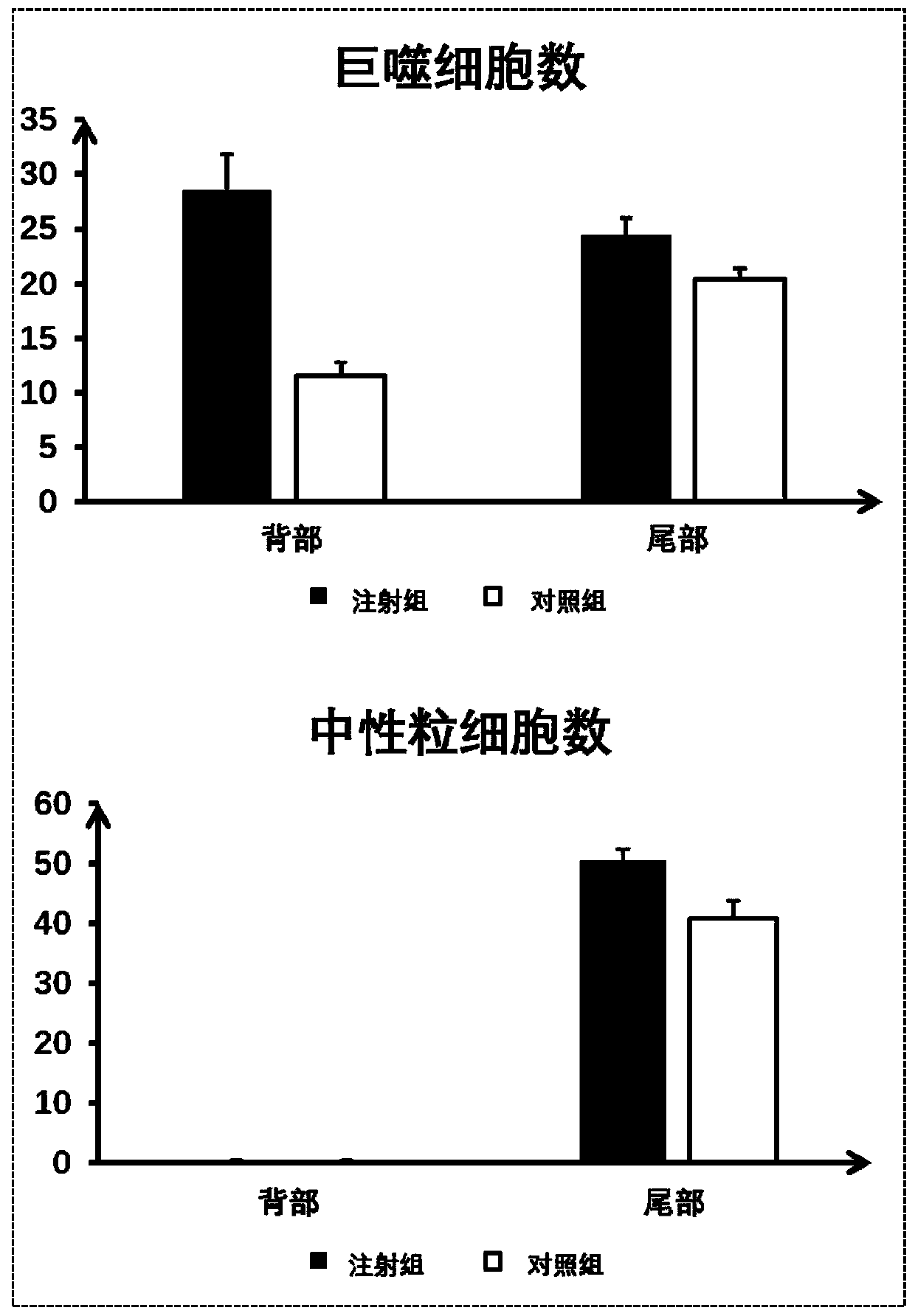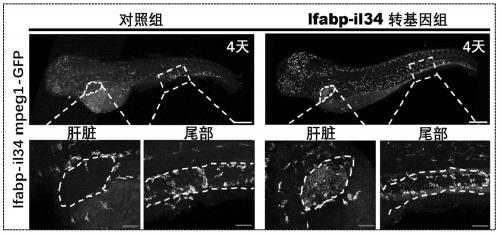Transgenic zebrafish model with macrophages aggregated specifically in liver
A technology of macrophages and zebrafish, applied in the biological field, can solve the problems of real-time observation of macrophages, lack of direct evidence, lack of evidence, etc.
- Summary
- Abstract
- Description
- Claims
- Application Information
AI Technical Summary
Problems solved by technology
Method used
Image
Examples
Embodiment 1
[0030] 1. Materials and methods:
[0031] (1) Zebrafish farming
[0032]Zebrafish were cultured as described in the literature (Westerfield M: The zebrafish: guide for the laboratory use of zebrafish (Brachdaniorerio). Edition by Eugene, OR, M. Westerfield, 1993).
[0033] The following strains are used in the present invention: AB wild-type zebrafish, Tg (mpeg 1: GFP) (i.e., using a macrophage-specific promoter-macrophage expression 1 to drive green fluorescent protein in macrophages Expressed transgenic zebrafish), Tg(lyz:eGFP) (transgenic zebrafish that uses a neutrophil-specific promoter - lysozyme to drive the expression of green fluorescent protein in macrophages), Tg(fabp10a: il34) (that is, the transgenic zebrafish that uses the liver cell-specific promoter—fatty acid transporter 10a to drive the expression of interleukin-34 in liver cells), Tg(fabp10a:dsRed) (that is, uses the liver cell-specific promoter— — Fatty acid transporter 10a to drive red fluorescent protei...
PUM
 Login to View More
Login to View More Abstract
Description
Claims
Application Information
 Login to View More
Login to View More - R&D
- Intellectual Property
- Life Sciences
- Materials
- Tech Scout
- Unparalleled Data Quality
- Higher Quality Content
- 60% Fewer Hallucinations
Browse by: Latest US Patents, China's latest patents, Technical Efficacy Thesaurus, Application Domain, Technology Topic, Popular Technical Reports.
© 2025 PatSnap. All rights reserved.Legal|Privacy policy|Modern Slavery Act Transparency Statement|Sitemap|About US| Contact US: help@patsnap.com



